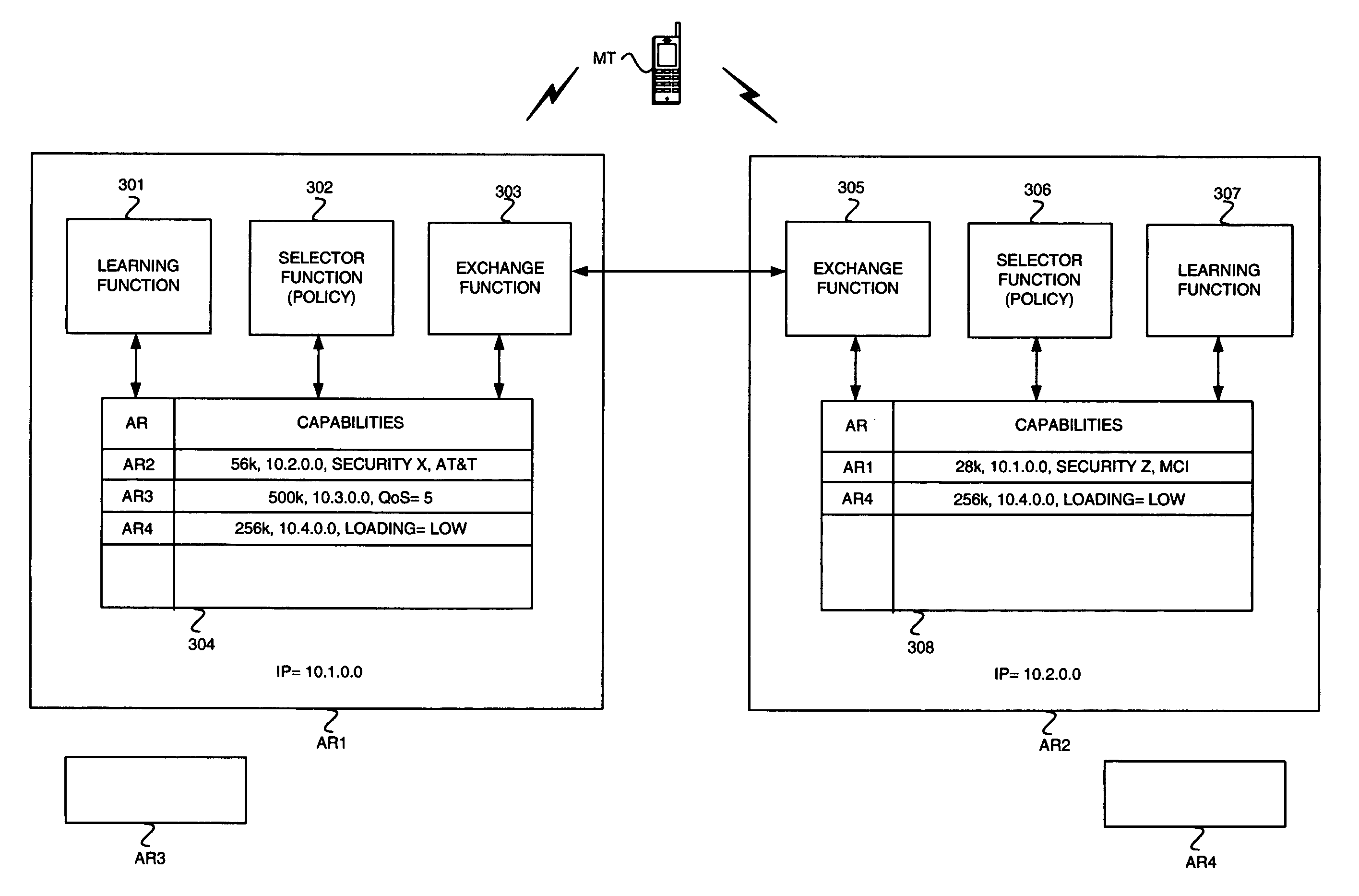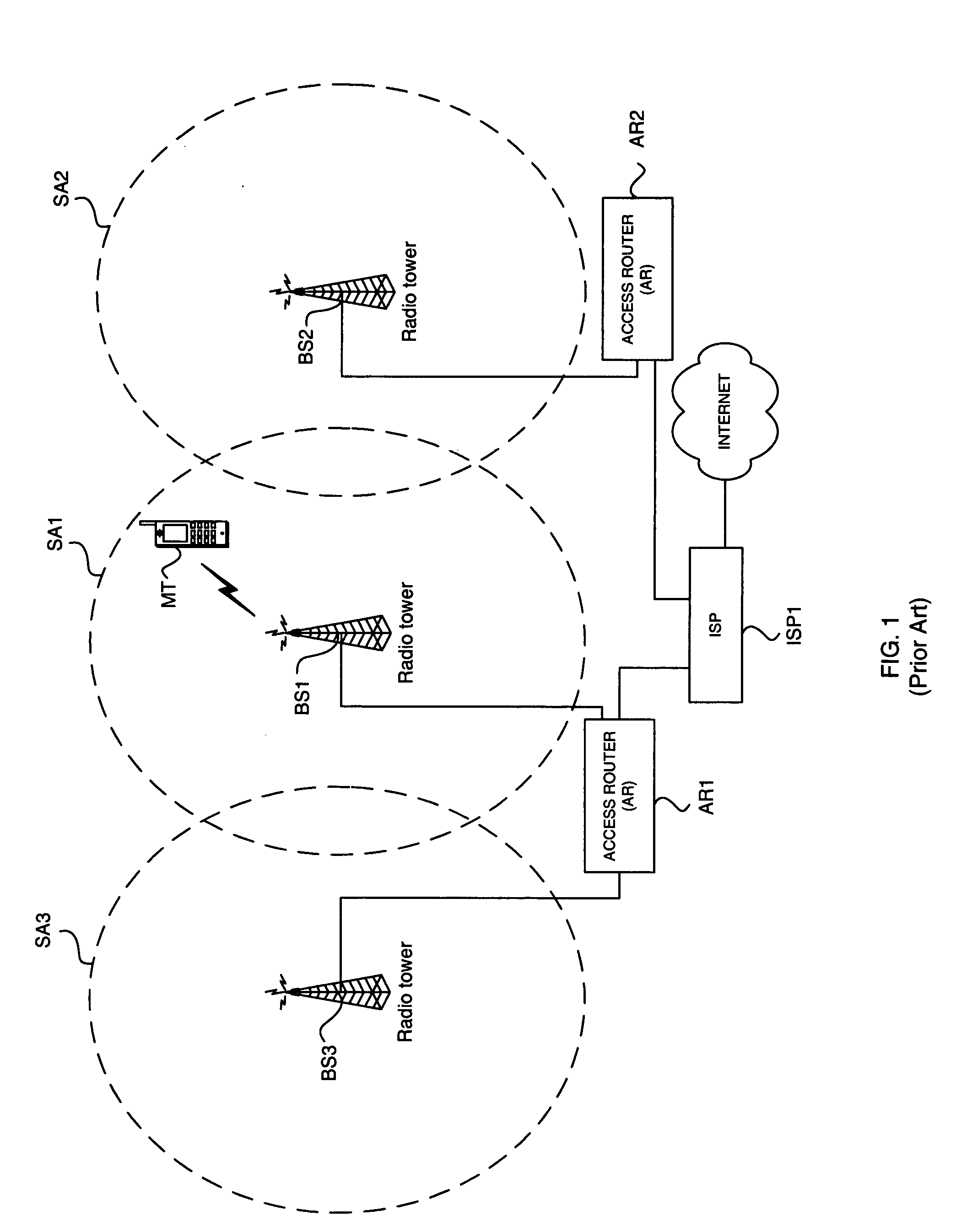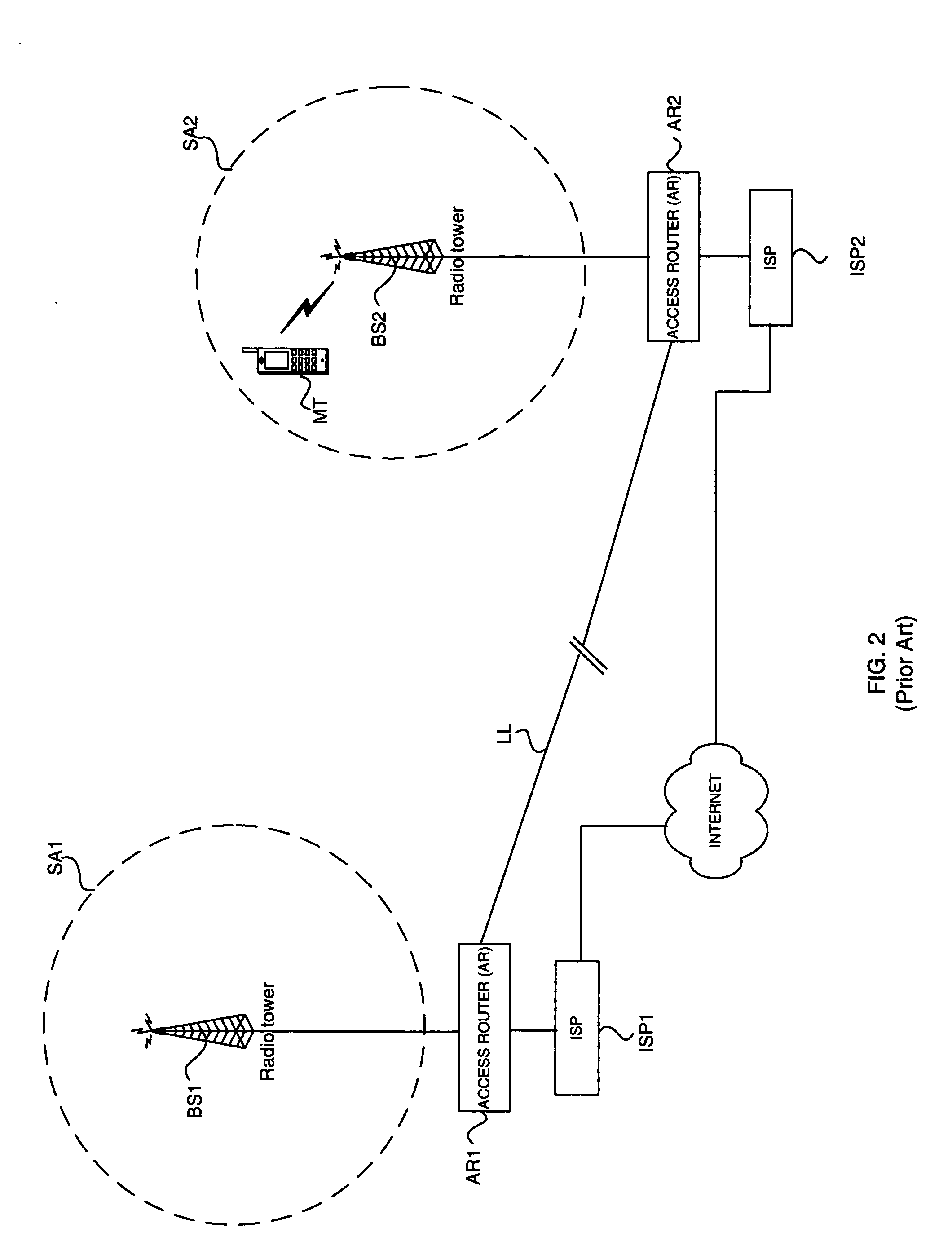Protocol to determine optimal target access routers for seamless IP-level handover
a technology of access router and target access router, which is applied in the field of mobile telecommunications networks, can solve the problems of handoff speed, no way for mobile terminal to specify or select, and no easy way for mobile terminal to select, so as to facilitate seamless hando
- Summary
- Abstract
- Description
- Claims
- Application Information
AI Technical Summary
Benefits of technology
Problems solved by technology
Method used
Image
Examples
Embodiment Construction
[0025]FIG. 3 shows a system employing various principles of the invention. As shown in FIG. 3, a first access router AR1 serves a first service area (not shown) in which a mobile terminal MT may be located. Although not explicitly shown in FIG. 3, it is assumed that each access router transmits and receives data packets through one or more base stations that cover corresponding geographic areas. It is also assumed that each access router provides Internet-compatible connections (e.g., IP protocol compatibility) such that data packets received at each router can be forwarded to one or more mobile terminals within the corresponding service area. Each access router includes an IP address used for communicating directly with the access router and a block of IP addresses that can be allocated and used by the access router for communicating with mobile terminals served by the access router. For purposes of illustration, AR1 is shown as having an IP address of 10.1.0.0, and AR2 is shown as...
PUM
 Login to View More
Login to View More Abstract
Description
Claims
Application Information
 Login to View More
Login to View More - R&D
- Intellectual Property
- Life Sciences
- Materials
- Tech Scout
- Unparalleled Data Quality
- Higher Quality Content
- 60% Fewer Hallucinations
Browse by: Latest US Patents, China's latest patents, Technical Efficacy Thesaurus, Application Domain, Technology Topic, Popular Technical Reports.
© 2025 PatSnap. All rights reserved.Legal|Privacy policy|Modern Slavery Act Transparency Statement|Sitemap|About US| Contact US: help@patsnap.com



